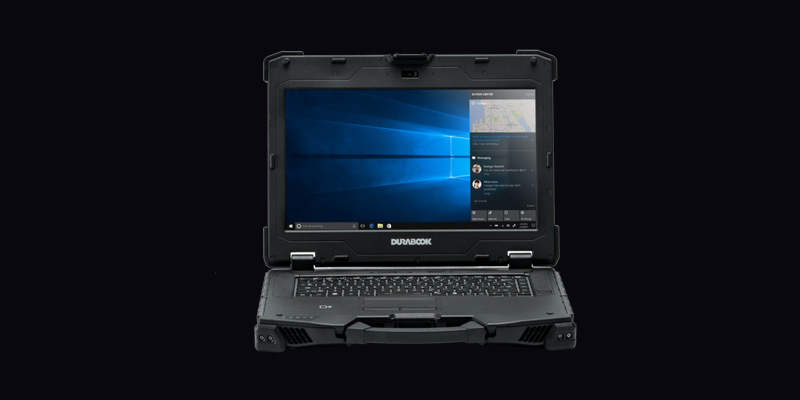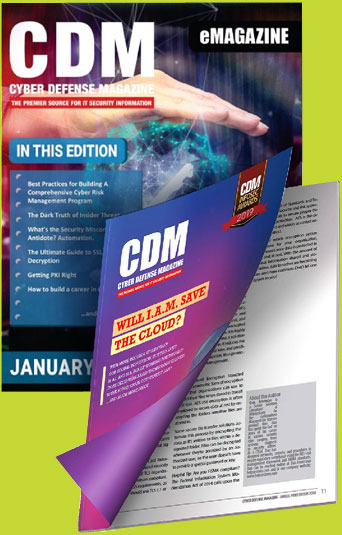By: Tom Wang, President of Durabook Americas, Inc.
Digitalization and workforce mobility are radically changing the way companies operate. As new technologies are adopted, work processes become more streamlined; access to and sharing information becomes more efficient; data becomes more prevalent, and analytics brings greater intelligence.
Companies and organizations in industries such as manufacturing, logistics, healthcare, public safety, and utilities are already experiencing how today’s advanced technologies impact their workers and businesses – IoT, AI, augmented reality (AR), cloud, and 5G, among others.
Rugged devices are increasingly becoming the lynchpin of all of these technologies as they enable organizations to realize even greater benefits. Companies are mainly relying on rugged laptops and tablets as edge devices at the front end for data collection and processing, at source data visualization, machine-to-machine communication, and more.
International Data Corporation (IDC), the premier global provider of market intelligence for the information technology, telecommunications, and consumer technology markets, expects the ruggedized segment to continue flourishing as companies continue their digital transformation and update their current devices.
Computer manufacturers that offer rugged devices can help organizations understand how to use such devices in the field as enablers for their digital transformation programs and ensure new technologies are used for their greatest benefit. Here are some examples:
IoT and Sensors
The use of IoT or intelligent sensors (such as M2M) is widespread, especially where there is infrastructure, assets, or real estate in the field, or where workers track goods in a warehouse for delivery or as part of a supply chain or production line. Rugged devices, such as fully rugged tablets, easily hook into IoT devices to support field workers during the inspection, maintenance, and routine checking of infrastructure and equipment.
Augmented Reality (AR)
Rugged devices have the power, data storage capabilities, and functionality – as opposed to consumer-off-the-shelf devices (COTS), which do not – to generate powerful graphics for data visualizations and advanced analytics at the source. IoT devices, central servers, and other connected devices can share data to a rugged device so that 2D and 3D mapping – or a mash-up of multiple data sources – can be created to help rapid repairs or plan team action in a number of public safety or defense scenarios
AI and Machine Learning
With so many new technologies collecting data, most organizations store, process, and analyze massive amounts of it. Without AI or machine learning lending a hand, making sense of all this data would be impossible. Rugged devices can contribute the latest data to a central server, then pull information required by the team in the field for completing tasks.
Edge Computing
While undoubtedly useful for field workers, collecting all of this data can become complex, could mean an increased security risk, and accessing the right information can become time-consuming as latency kicks in, especially in remote situations. This is where Edge computing comes in, as it allows for selective, real-time data processing from within devices based on specific needs.
Why rugged devices?
First off, rugged are the only devices that can withstand the often harsh conditions many field computers must endure, a major consideration for any computer put to work in the field. They are designed to handle the battle between freezing and thawing, super high and insufferable low temperatures, and stifling high humidity and skin-drying arid humidity.
They boast more power, performance, storage, functionality, and add-on features – such as graphics, heat sensors, and thermal imaging – than consumer-off-the-shelf products that would quickly fail if put to work with these new technologies.
While they may cost more at the outset, they are far more cost-effective in the long term because of the lower need for repair or replacement and associated costs.
Rugged devices are undoubtedly becoming more critical for workers in the field, and as data becomes more prevalent and essential to everyday tasks, rugged will play an even bigger role. For organizations wanting to use these new technologies to boost productivity, improve efficiency and streamline processes, rugged devices will be critical in the future.
A single rugged device can act as a force multiplier and driving greater efficiencies and other benefits It also offers the flexibility to be deployed in a range of settings to perform any number of tasks thrown at it.
Now that we have established the value of rugged computers in regard to digitalization, here are some features to consider in making a purchasing decision.
- Intel® Tiger Lake 11th generation CPU featuring Intel 10nm processor technology
- Ultra-high-speed data transmission capability through Intel® Wi-Fi 6 AX201 and Bluetooth® V5.2; information can be instantly synced and fed back to the data-control center
- Thunderbolt™ 4 technology makes connecting the modern workspace more flexible and simpler than ever
- Large Full HD (1920×1080) with sunlight-readable display (Durabook, for example, offers DynaVue® sunlight readable technology that provides a high contrast ratio to eliminate reflection and deliver exceptional clarity to support workers operating in bright outdoor environments, even in direct sunlight.)
- Ultra-long battery life and battery-swap capability for non-stop operation outside of the office
- Compatibility with a variety of interfaces such as: digital and analog video outputs; HDMI + VGA + USB Type-C DP; Smart card/CAC reader; PCMCIA or Express Card; RFID reader; RS-232 serial port; RJ-45 LAN port; and Fischer connector
- Media bay for customized expansion
- 10-point capacitive multi-touch panel
- Multiple touch modes – such as glove, stylus, water, finger – to optimize for both indoor and outdoor applications
- NVMe PCIe SSD technology, providing up to 1TB of storage with PCIe speeds 4x faster than SATA III
- MIL-STD 810H and MIL-STD-461G certifications
- IP65 rating, protecting against dust and water ingress
- Resistance of up to a six-foot drop
- Extensive customization capability
- 2-in-1 design with a fast release detachable keyboard – 939
The onslaught of digitalization has led to databases becoming increasingly more and more sophisticated. Hence, it is imperative that companies and organizations improve their performance and security.
Physical security is an area that often gets overlooked in data security discussions. Having a poor policy or no policy regarding the physical aspect of security can lead to a full compromise of data or possibly an entire network.
One way of protecting such data is through a system called RAID (Redundant Array of Independent Disks). Basically, RAID is a system that helps protect against data loss and system downtime. Computers or servers with a RAID system installed has more than one hard drive so that if the main hard drive fails, the system keeps running and your data is not lost. The most commonly used are RAID configurations are RAID 0, RAID 1, RAID 5, and RAID 10. – End of Article
About the Author
Tom Wang has been instrumental in the development of the rugged computing product line for the Americas. Additionally, he leads the Durabook commercial business unit based in Fremont, CA, as president. Mr. Wang’s career has spanned over 20 years, as he previously worked with Getac in product development, product marketing, and business development. Tom can be reached online at [email protected] and at our company website http://www.durabook/com/us.


